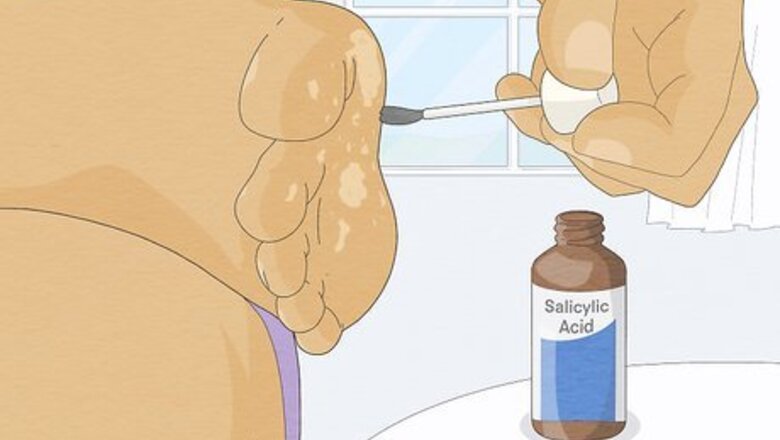
views
Home Remedies
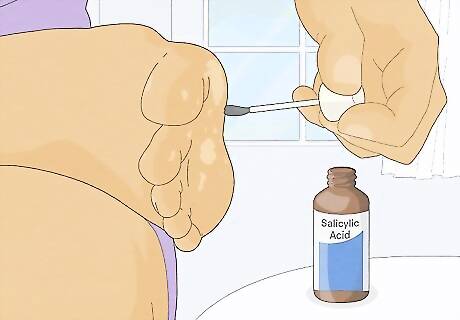
Apply salicylic acid to the wart. Salicylic acid, often found in acne medications, is an over-the-counter treatment that can be applied to a wart to treat it. Studies show that it’s one of the most effective treatments for warts. Check your local pharmacy or grocery store for salicylic acid wart treatments, which may come in the form of gels, liquids, or patches. For the best results: Soak the area with the wart for 10-15 minutes in warm water in your shower, bath, or a basin. Gently file away dead skin over the wart with a pumice stone or emery board. Apply the salicylic acid gel, cream, or patch directly to the wart. Do this 1-2 times daily for 12 weeks. Use a patch that can stay in place for several days if you’re treating an especially stubborn wart or one that’s located in an area with very thick skin, like the bottom of your heel. Avoid getting the salicylic acid in your eyes, nose, or mouth, and immediately rinse it away if it gets into one of these areas. Ask your doctor before using it if you have neuropathy or another condition that limits sensation in your hands or feet.
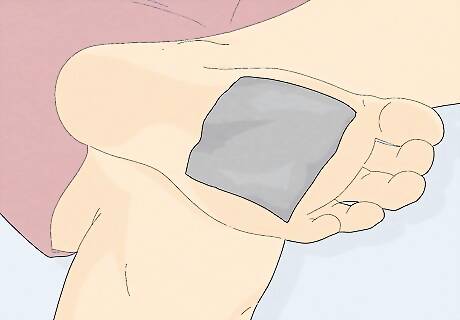
Cover the warts with duct tape. Although doctors are not sure why this home remedy works, covering your warts in duct tape may help treat and remove mosaic warts. Apply the duct tape directly over the wart and leave it there for 6 days at a time. Whenever you take the tape off, soak your wart in warm water, then file off the dead layers of the wart with a foot file or pumice stone before applying fresh tape. You can get a foot file or pumice stone in any drugstore. When choosing duct tape, use the standard silver kind, which you can get in most hardware or office supply stores. Other types, such as transparent duct tape, may not be as effective. Expose the wart to the air for 3-4 hours after filing off the layers of dead skin. Reapply the duct tape after this. Continue this treatment of duct tape and filing until the wart is completely gone. Some people combine duct tape with other treatments, such as salicylic acid or cryotherapy. Using a combination of treatments may be more effective than any 1 treatment alone.

Try a vinegar compress. There’s not a lot of scientific evidence that vinegar is effective at healing warts. However, some people swear by this popular home remedy. To do it, soak a cotton ball in a mixture of 2 parts apple cider vinegar and 1 part water. Secure the cotton ball in place over the wart with tape and leave it there overnight. Continue doing this every day until the wart heals up. If you don’t have apple cider vinegar, use a mixture of 2 parts lemon juice and 1 part water instead.
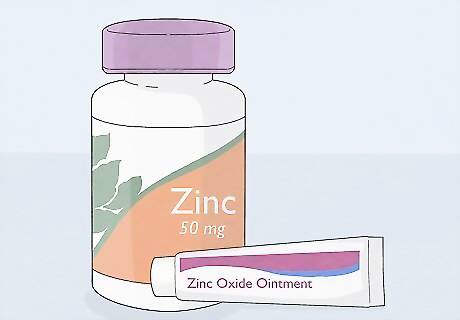
Use zinc ointment or an oral supplement. Zinc can be an effective remedy for warts—especially if you have a zinc deficiency. To treat your wart with zinc, try applying a zinc oxide ointment, preferably with a concentration of at least 15%. Use the ointment up to 3 times per day. You may notice a difference within 3-4 weeks. You can also try using an oral zinc supplement, which may help by boosting your immune system and helping your body fight the virus that causes mosaic warts. Ask your doctor to recommend a dose, but generally 15mg per day is safe and effective for both kids and adults.

Freeze off the warts with over-the-counter medications. Cryotherapy works by freezing the tissues of the wart. This option can be painful and may need to be repeated several times, so try other options first. To do it at home, purchase a kit at your pharmacy containing dimethyl ether and propane, such as Compound W Freeze Off or Dr. Scholl’s Freeze Away. Follow the instructions carefully, or ask your doctor or pharmacist for advice. Most of these kits come with a foam applicator that you will use to apply the chemical mixture to the wart. While home cryotherapy treatments are usually safe if you follow the directions, there’s a small risk of scarring, burns, or infection. Call your doctor if you notice symptoms such as increasing pain, redness, or swelling, red streaks spreading away from the area, a discharge of pus, or a fever. Freezing treatments can be flammable and shouldn’t be used near any fires, flames, heat sources such as curling irons, or lit cigarettes.
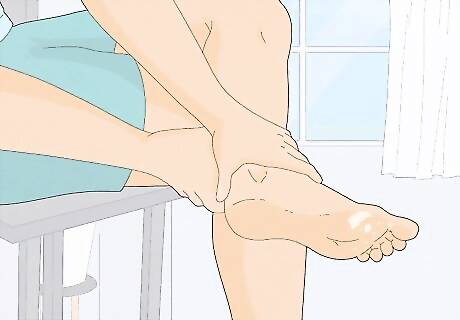
Let the warts heal without treatment if they don’t hurt. Warts will often disappear on their own without treatment. If your mosaic warts are not painful, consider taking a “wait and see” approach. About 75% of warts go away within 2 years. Mosaic warts tend to be fairly painless compared to regular plantar warts. However, they can sometimes hurt or cause discomfort when you walk. If this is the case, you might want to get them removed rather than wait. If you’re on the fence about whether to treat the warts or wait, also keep in mind that treatment can help prevent the warts from spreading (either to other people or other parts of your own body) and may reduce their chances of coming back.
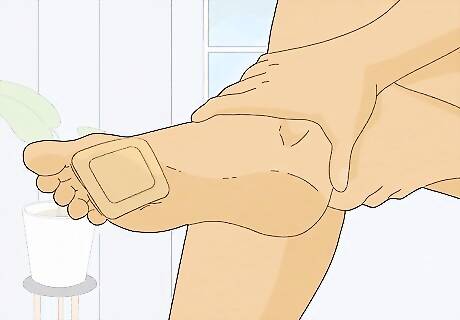
Cover your warts to keep them from spreading. Since warts are caused by a virus, they can spread to other people or other parts of your body. To prevent this from happening, keep the warts covered as much as possible with a clean bandage, duct tape, or wart patch. You can also protect yourself and others by: Wearing shoes in common areas such as public showers, changing rooms, or swimming pools. Not sharing towels, shoes, socks, or foot files with other people. Refraining from touching, scratching, or picking at your warts. If you do touch them, wash your hands with soap and water afterwards. Keeping your feet dry and wearing clean shoes and socks.
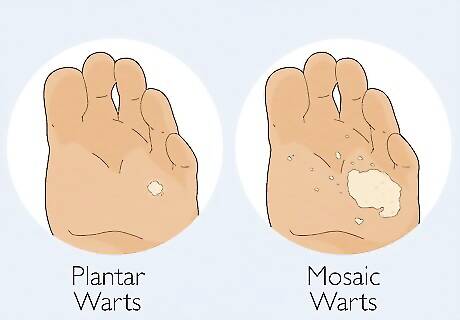
Have a doctor diagnose your warts if you’re not sure what they are. Before you use any home remedies, confirm that your skin condition is actually plantar or mosaic warts. An accurate diagnosis can help you develop the best care plan and ensure that you don’t damage your skin with unnecessary treatments. A doctor will diagnose the warts by examining them. In some cases, they might shave off a small amount of the wart with a scalpel. This can help them spot telltale dots under the surface of the skin (tiny, clotted blood vessels), or they may wish to send a sample to the lab for testing. To spot mosaic warts, look for clusters of white, pinhead-sized bumps on the bottoms of your feet or toes. These warts are similar to plantar warts, but they tend to be flatter and may spread over a large area (like the entire sole of your foot). Warts can sometimes be confused with similar-looking growths, like corns or even (rarely) skin cancer. This is why it’s a good idea to get possible warts checked out if you’re not sure.
Professional Treatments

See your doctor if home treatments aren’t working. It’s also a good idea to seek medical care if your wart is painful, keeps coming back or spreading, or seems to be getting worse. Your doctor can examine the wart and work with you to determine the best treatment plan. If your wart is bleeding or you notice changes in its size, appearance, or color, see your doctor to rule out something more serious (such as skin cancer). Call your doctor about a wart right away if you have an underlying medical condition that affects your immune system or affects the sensation in your feet, such as diabetes, HIV/AIDS, or a weakened immune system due to medications.
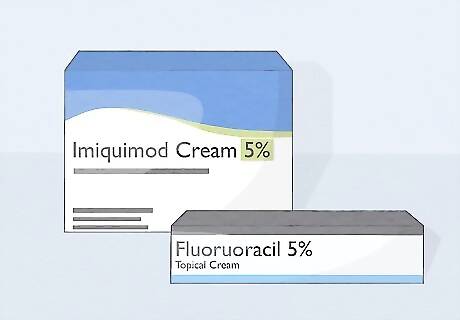
Ask your doctor about prescription ointments. If OTC treatments like salicylic acid aren’t working, your doctor may prescribe something stronger. Some medications that may be effective include: Imiquimod (Aldara), a cream that stimulates the immune system to attack the wart tissue. Typically, your doctor will instruct you to apply the cream once a day, 3 days a week. This treatment may last for up to 16 weeks, or until the warts heal. 5-fluorouracil cream (5-FU), a chemotherapy drug. This medication is especially effective when combined with other treatments, like salicylic acid or duct tape.
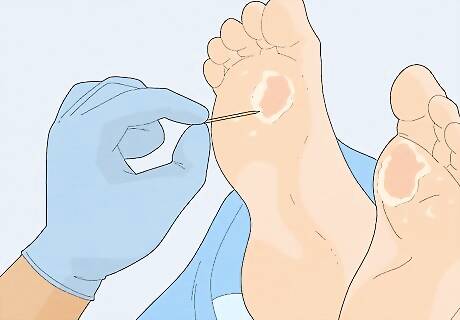
Let your doctor apply a stronger acid peel. For deep or stubborn mosaic warts, a more powerful chemical peel may help. Your doctor might recommend in-office treatment with a chemical such as trichloroacetic acid. Return once a week or as often as your doctor asks you to for treatments. Your doctor will first shave the dead skin off the surface of the wart. Then, they will apply the acid with a toothpick. You may experience burning or stinging in the skin around the wart. Some doctors recommend combining this treatment with salicylic acid treatments at home.
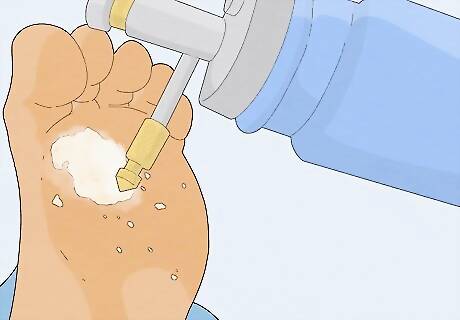
Have the wart frozen off with liquid nitrogen. Similar to over-the-counter cryotherapy, your doctor may opt to freeze off your wart with liquid nitrogen. This can be a painful treatment that requires multiple applications, so discuss alternative treatments first. In some cases, your doctor may apply a numbing agent to the wart before dabbing or spraying on the liquid nitrogen. They may also try to cut away some of the wart tissue first with a scalpel. You may need up to 4 treatments to get rid of the wart completely. Typically, there will be a break of 1-3 weeks between each treatment. You’ll likely develop a blister over the wart, which may be painful for the first 3 days after the treatment. The area should heal up in 7-14 days.

Talk about oral medications. In addition to topical treatments, there’s evidence that some oral prescription medications can promote faster healing in warts. If your warts aren’t responding well to creams, peels, or freezing, ask your doctor about options like oral retinoids or cimetidine. Oral retinoids, such as isotretinoin, are effective at treating a wide variety of skin conditions, including stubborn warts. However, these medications can cause severe side effects, such as skin infections, joint pain, and eye inflammation. They’re also associated with a high risk of birth defects, so don’t take this medication if you’re pregnant or could become pregnant. Cimetidine is a medication that is usually used to treat acid reflux. However, it has also been shown to be helpful in treating warts. Most people tolerate it well, but it can cause side effects, such as headaches, diarrhea, constipation, dizziness, and fatigue.
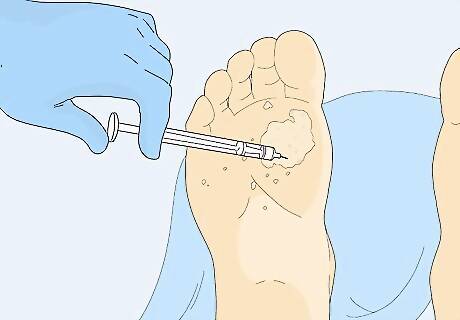
Discuss getting immunotherapy injections. If other methods don’t work, or if your warts keep coming back or multiplying, your doctor may try immunotherapy. This involves injecting the wart with an substance that triggers the immune system to attack the infected tissue. Alternatively, your doctor might try injecting a chemotherapy drug called bleomycin into the wart. There’s limited evidence that these therapies actually work, and they can also cause a variety of side effects. Your doctor will probably want to try other approaches before turning to injections.
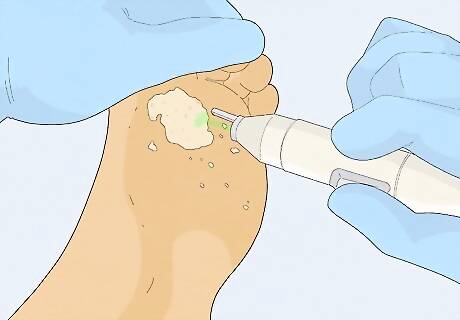
Get laser therapy for large or persistent warts. If other treatments don’t work or if your warts are especially large or widespread, your doctor may suggest laser therapy. This is also an option if you’re pregnant and would rather avoid medicinal treatments. Be aware that laser therapy is painful and more likely to cause scarring than other approaches. It may also be less effective than other treatment methods, such as cryotherapy. The wound from a laser treatment may be painful for a few days. To minimize pain during the procedure, your doctor may apply a local anesthetic. Call your doctor if you experience complications after a laser treatment, such as severe pain, bleeding that lasts longer than 1 week, or signs of an infection (including a fever, pus or yellow discharge from the wound, and increased pain, swelling, redness, heat, or tenderness around the wound).

Opt for surgery if nothing else works. Surgery can sometimes be an effective treatment for large or persistent mosaic warts. If less drastic methods aren’t working, ask your doctor about curettage and electrocautery for your wart. During this treatment: Your doctor will apply a local anesthetic to numb the area around the wart. They will then scrape away the tissue of the wart with a surgical tool called a curette. Once the wart is removed, they will apply electricity to the wound with a needle-like instrument. This will help destroy any remaining wart tissue and stop the bleeding. Because of the pain and scarring associated with this procedure, it’s best to use it as a last resort. If possible, use other options if your warts are located on the soles of your feet.



















Comments
0 comment